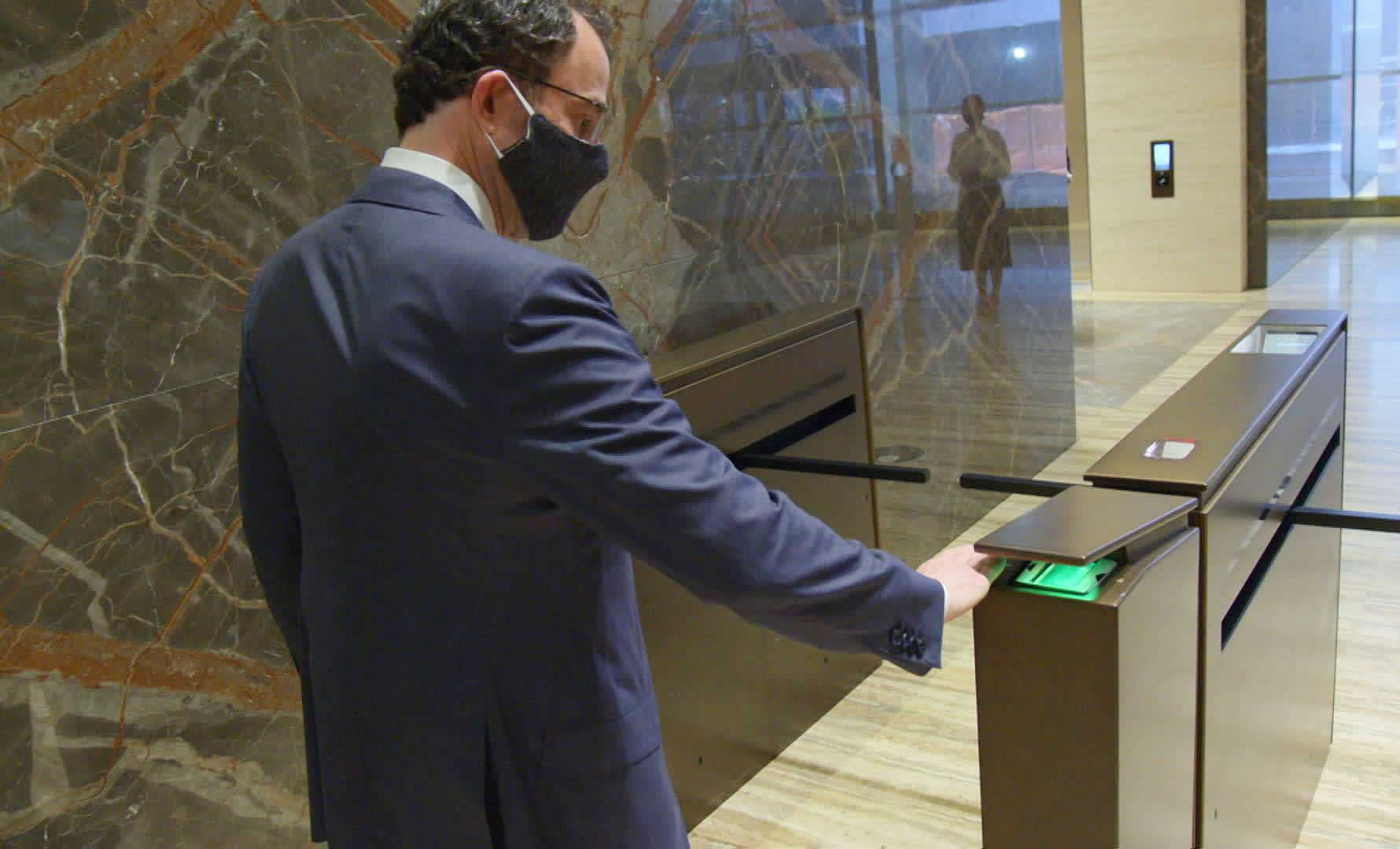Products You May Like
As New York City reopens for business, so too will offices in the city’s largest new real estate development, Hudson Yards.
It will not, however, be business as usual upon entry to 30 Hudson Yards, nor throughout the 2.6 million-square-foot tower, nor any of the other office buildings in the complex.
Tenants will be scanned in several ways, using some of the latest identity technology.
While some essential workers have been there throughout the shutdown, the offices at the more than 100-story tower have been largely empty until now. Its developer, Related, is asking that its tenant clients stagger in-times, and they expect most will start with just 25% of their workforce and rise from there.
“The days of eight to eight zoom calls, it’s really not that productive, and I think great creativity and innovation happens when people are together,” said Jeff Blau, CEO of Related. “So I do think people ultimately come back to the office.”
As workers return to 30 Hudson Yards, they will be required to wear masks and will be greeted at the first escalator with instructions to stay at least three stair steps apart.
Once reaching the main lobby, workers will be required to go through a temperature scan. The IRIS-Q Thermography Device was specifically designed for flu screening and is used for large-scale temperature monitoring in crowded public places. It can detect individuals with fever immediately. There are 32 of these systems throughout the entire complex.
If a person’s temperature exceeds 100.4 degrees, they are then retested on a hand scanner. If that confirms the reading, the worker must go home. While these scans may seem like the ultimate invasion of privacy, literally looking inside your body, Blau said they will not keep records of people turned away.
Employees walk through the temperature scan machine at 30 Hudson Yards
CNBC
“It’s all anonymous, we’re not keeping track of any of this. It’s just checking your temperature as you go through,” he said.
Once through the temperature scan, workers then swipe their hand over a turnstile scanner, using MorphoWave technology from Idemia, a global identity technology firm. It not only gives them entry, but tells the elevator where they are going. They can override that through a smartphone app, if they are headed to a different floor.
Elevators will be limited to four riders, with position dots on the floor for distancing. Signs in front of the elevators remind people, “5’s a crowd.”
Hudson Yards already had state-of-the art air filter systems, but representatives of Related say they are exploring ways to improve air filtration systems, prototyping technologies like bipolar ionization which may remove even more unwanted particles from the air in commercial buildings.
The office sector has been hit hard by the coronavirus pandemic. The national office vacancy rate was 12.3% in the first quarter of this year, according to CBRE, a commercial real estate firm. It predicts office vacancies will reach a high of 14.9% in the first quarter of 2021 and then recover to pre-pandemic levels by the first quarter of 2022. The same will hold true for rents, which are projected to bottom at the end of this year.
The transition to safer offices will come at a cost to landlords and developers alike, although it is hard to put an exact price tag on yet. While the work-from-home trend may change the way Americans work for good, it will not keep them from the office permanently.
“We believe it is too early to write the epitaph for the entire office sector as there are a number of counterbalancing forces at work,” said Jonathan Woloshin, a real estate analyst at UBS. “Companies will be faced with the realities of reconfiguring space to accommodate proper social distancing. Landlords will be faced with significant capital spending requirements to enhance building safety.”
Blau said he thinks some firms will actually look for more space.
“Some tenants that have built very dense spaces, whether it’s trading floors or bench seating, have decided that ultimately they want to have more separation,” he said.
